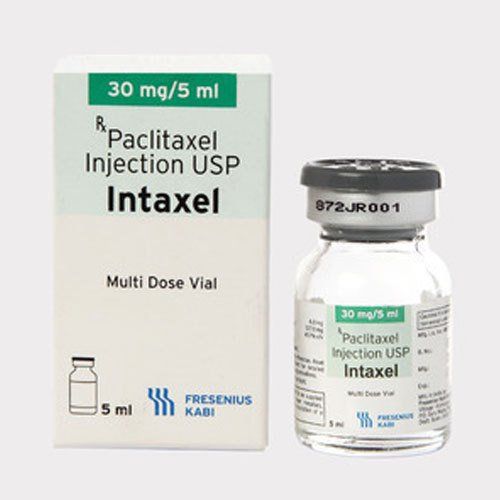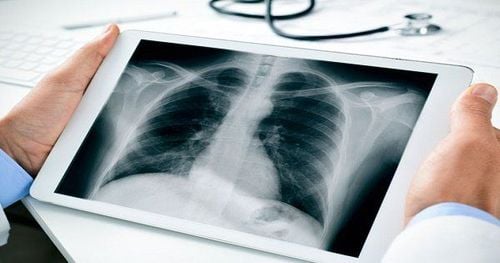This is an automatically translated article.
The article is written by MSc, Doctor Tran Thi Huyen Trang, Laboratory Department - Vinmec Times City International Hospital
Pro-GRP has been developed and proven to be a reliable biomarker in small cell lung cancer (SCLC), being the most sensitive marker for differential diagnosis with other lung cancers and other types of lung cancer. Benign lung disease.
Lung cancer is the most common cancer and the leading cause of cancer death, with 2 million new diagnoses each year and 1.7 million deaths each year worldwide. In Vietnam, every year there are about 22,000 new cases and 19,500 deaths from lung cancer, which is estimated to increase to 34,000 cases in 2020.
The leading risk factors for lung cancer are smoking or passive smoking, exposure to radiation, exposure to carcinogenic environments such as inhalation of asbestos fibers (common in asbestos) or diesel (common in asbestos). common when burning petrochemical fuels), chemicals or minerals, etc., radiation to the chest, family history (eg, a 6q mutation increases the risk of lung cancer), air pollution. ..

Hút thuốc là là yếu tố nguy cơ hàng đầu dẫn đến ung thư phổi
1. Pro – What is GRP?
Progestrin-releasing peptide (progastrin-releasing peptide) is a precursor of a neuropeptide hormone called gastrin-releasing peptide (GRP). GRP is present in nerve fibers, brain, and neuroendocrine cells in the bronchial epithelium of the fetus and neonate, and is produced by small cell lung cancer cells. : SCLC). The function of GRP is to stimulate gastrin production in the human digestive system and stimulate respiratory development. Due to its short half-life of 2 minutes, it is not possible to measure GRP in the blood, so Pro-GRP was developed and proved to be a reliable biomarker in small cell lung cancer (SCLC), a most sensitive for differential diagnosis with other types of lung cancer and benign diseases of the lung.2. When is the ProGRP test ordered?
Diagnosis of small cell lung cancer in patients with symptoms of lung cancer: persistent cough, hemoptysis, chest pain, shortness of breath, unexplained weight loss, fatigue... distinguish small cell lung cancer from other types of lung cancer Evaluate the effectiveness of treatment for small cell lung cancer; Detection of recurrence after treatment for small cell lung cancer.

Xét nghiệm ProGRP được chỉ định khi bệnh nhân có triệu chứng nghi ngờ ung thư phổi
3. What does Pro GRP test mean?
Normal healthy human plasma ProGRP concentration is ≤ 50 ng/L, in some cases (approximately 5%) ProGRP levels are higher than normal but still < 75 ng/L.
Increased Pro GRP levels > 200 ng/L is considered a warning sign of the risk of small cell lung cancer.
Pro GRP levels elevated > 300 ng/L, normal kidney function may suggest small cell lung cancer.
In patients with renal failure (eGFR ≥ 30) ProGRP levels can be increased up to 350 ng/L.
In differential diagnosis, ProGRP is the most sensitive tumor marker for small cell lung cancer, helping to differentiate it from other types of lung cancer. In both metastatic (Mo) and metastatic (M1) stages of small cell lung cancer, the diagnostic sensitivity of ProGRP was markedly higher than that of other lung cancer markers such as NSE, CEA, etc. CA125, CYFRA 21-1 and SCC. Detection of small cell lung cancer recurrence: The ProGRP test (often in combination with NSE) is used to detect recurrence after treatment for small cell lung cancer by monitoring ProGRP levels (decreased when response to treatment; unchanged in response to treatment and increased in relapse).
In the prognosis of patients with lung cancer: High initial ProGRP levels before treatment predict a short survival time; A >51% reduction in ProGRP from baseline after first-line chemotherapy can rule out disease progression after second-line chemotherapy in >95% of patients.

Pro GRP là chỉ số đặc trưng giúp phân biệt ung thư phổi tế bào nhỏ với các loại ung thư phổi khác
4. Conclusion
(1) ProGRP is a specific marker for small cell lung cancer. As a good test for diagnosis, prognosis, monitoring and treatment of small cell lung cancer, it is more sensitive than NSE and other lung cancer markers, helping to differentiate it from other tumors of the lung. , is particularly useful when a biopsy of a lung tumor cannot be performed. Only 2.5 ml of heparin anticoagulated venous blood is required (no fasting required for blood collection).
(2) Combining cancer marker tests (set of 5 tests: CEA, Cyfra 21-1, SCC, ProGRP, NSE) with imaging helps to solve the challenges of early cancer diagnosis lung.
Lung cancer screening is the most effective measure for you to detect and promptly treat lung cancer, protect your health and life. Currently, at Vinmec international general hospitals, there are health care programs for lung cancer screening with many outstanding advantages such as: A team of highly qualified and experienced doctors; Having a full range of specialized facilities to diagnose the disease and stage it before treatment: Endoscopy, CT scan, PET-CT scan, MRI, histopathological diagnosis, gene-cell testing... There are full range of main treatment methods for cancer: surgery, radiation therapy, chemotherapy, stem cell transplant....
Please dial HOTLINE for more information or register for an appointment HERE. Download MyVinmec app to make appointments faster and to manage your bookings easily.













